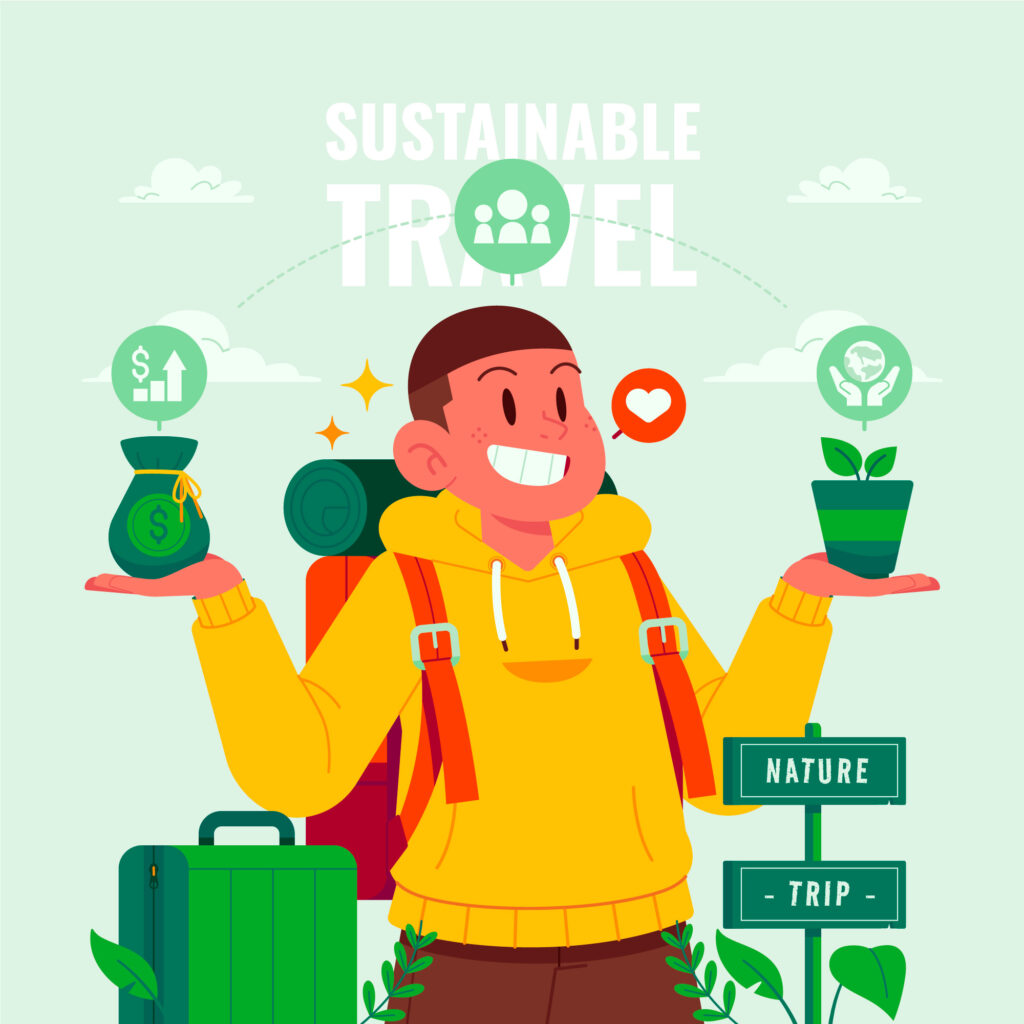Introduction
The way people travel is changing, and in 2025, sustainability has moved from being a niche choice to a mainstream demand. Tourists in the US, UK, and across the globe are increasingly aware of the environmental impact of their trips. From choosing eco-friendly accommodations to prioritizing public transport and supporting local businesses, the future of tourism is now being shaped by eco-conscious decisions. This article explores how sustainable travel is evolving in 2025, the factors driving this shift, and what destinations, travelers, and the tourism industry can expect moving forward.
The Rise of Sustainable Tourism
Travelers today want more than just a vacation—they want meaningful experiences that align with their values. Sustainable tourism is no longer about compromise; instead, it is about balance—experiencing the world while protecting it. According to travel insights, over 70% of global tourists now say they prefer eco-conscious travel options, and this number continues to grow in 2025.
This shift is being fueled by:
- Climate change awareness – Frequent climate-related events have made travelers more conscious of their carbon footprint.
- Social responsibility – Supporting local communities has become a priority for many.
- Policy and regulation – Governments in the US, UK, and Europe are pushing greener tourism through incentives and stricter environmental guidelines.
Eco-Friendly Accommodations: Green Hotels on the Rise

Hotels and resorts have taken major steps to meet eco-conscious expectations in 2025. Travelers now look for accommodations that are not just comfortable, but also environmentally responsible. Some trends include:
- Carbon-neutral stays – Properties powered by renewable energy sources.
- Zero-waste hotels – Eliminating single-use plastics and reducing food waste through sustainable sourcing.
- Eco-certifications – Travelers are increasingly checking for globally recognized sustainability labels before booking.
- Local architecture & design – Resorts blending with the natural environment rather than disrupting it.
Platforms such as Booking.com and Airbnb have introduced “eco-friendly” filters, making it easier for tourists to choose sustainable stays.
Transportation Choices: Flying Less, Greener Alternatives More
Transport is one of the biggest contributors to tourism-related emissions. In 2025, eco-conscious travelers are making different choices:
- Slow travel – Instead of multiple short trips, travelers are opting for fewer but longer stays.
- Trains over planes – In Europe and the UK, high-speed rail is becoming a strong alternative to flights.
- Electric vehicles – Rental companies across the US and UK now offer EVs as the standard option.
- Carbon offsetting – Airlines are expanding offset programs, but tourists are increasingly skeptical, preferring real reductions over offsets.
Local Experiences Over Mass Tourism
In 2025, travelers are looking for authenticity while minimizing impact on local ecosystems. This shift includes:
- Community-based tourism – Choosing homestays and locally owned businesses over multinational chains.
- Farm-to-table dining – Supporting local food systems while enjoying authentic cuisine.
- Small-group tours – Avoiding mass-tourism models that strain destinations.
- Respecting cultural heritage – Tourists are more mindful of preserving traditions and supporting artisans.
Tech & Innovation Driving Sustainable Travel
Technology is playing a big role in making eco-friendly travel easier. Some innovations shaping 2025 include:
- AI-powered itinerary planners that suggest low-carbon routes.
- Smart hotels using IoT for energy and water efficiency.
- Sustainable travel apps that track a traveler’s carbon footprint in real time.
- VR & AR experiences – Virtual tourism reduces the need for some high-impact physical travel.
Popular Sustainable Destinations in 2025
Several regions in the US and UK have emerged as leaders in eco-tourism this year:
US Destinations
- Oregon & Washington – Known for eco-lodges, hiking trails, and renewable-energy powered cities.
- Colorado – Promoting sustainable skiing and mountain tourism.
- Hawaii – Shifting towards regenerative tourism with strict preservation rules.
UK Destinations
- Scotland’s Highlands – Emphasizing nature-based tourism and rewilding initiatives.
- Cornwall – Promoting local seafood, cycling trails, and eco-lodges.
- Wales – Highlighting national parks and community-driven tourism.
Challenges of Sustainable Tourism
Despite its growth, eco-tourism still faces challenges:
- Greenwashing – Some businesses exaggerate their sustainability efforts to attract tourists.
- Cost factor – Eco-friendly options are often pricier, making accessibility an issue.
- Balancing growth & preservation – Popular destinations risk over-tourism even under a “sustainable” label.
For 2025 and beyond, tourists are expected to demand more transparency and accountability from the travel industry.
Future Outlook: The Next Chapter of Sustainable Travel
Sustainable travel is no longer just a trend—it’s the new foundation of the tourism industry. As younger generations, particularly Gen Z and Millennials, dominate the travel market, demand for eco-conscious choices will continue to accelerate. By 2030, experts predict that most major destinations will have sustainability benchmarks in place, and travelers will hold brands accountable for meeting them.
Conclusion
In 2025, travel is not just about where you go—it’s about how responsibly you get there and what impact you leave behind. With eco-friendly accommodations, greener transport options, and more meaningful cultural exchanges, tourists are reshaping the way the world travels. For both US and UK travelers, sustainability has shifted from an option to an expectation.
As the tourism industry adapts, one thing is clear: the future of travel is green.

